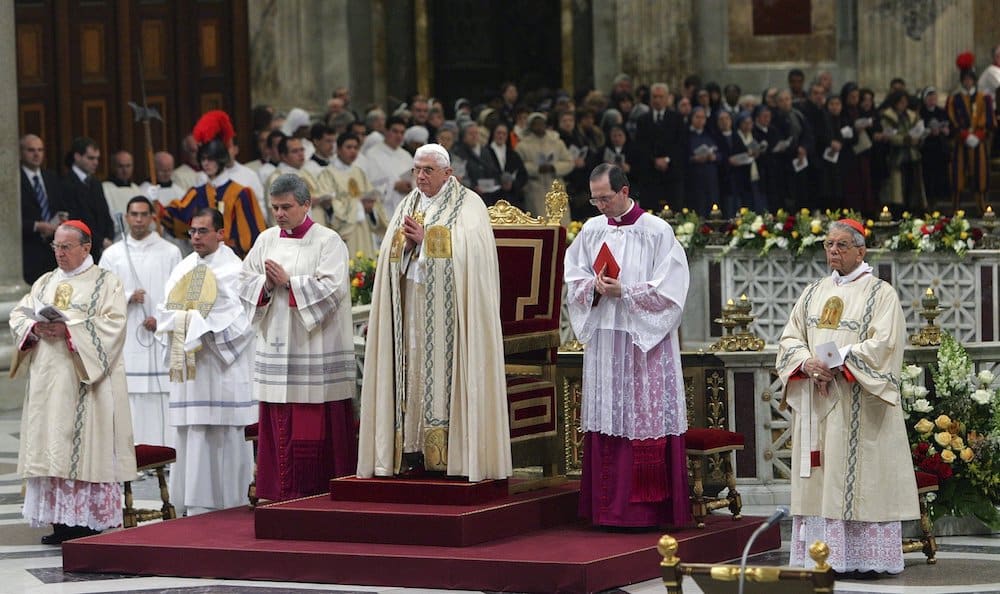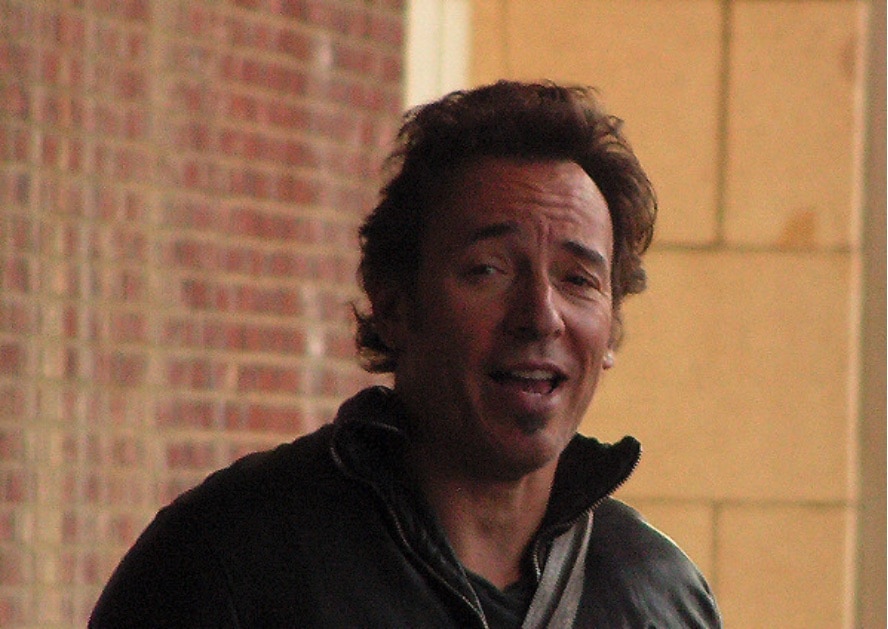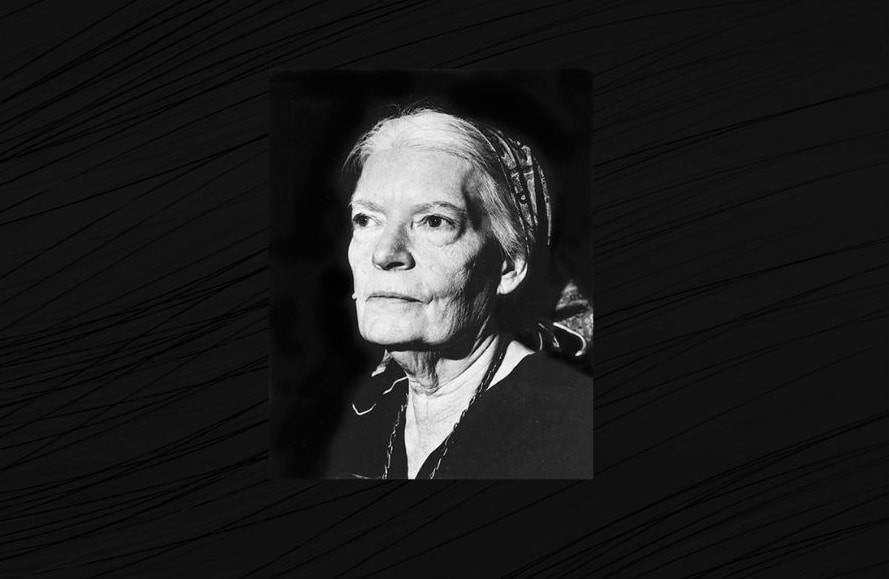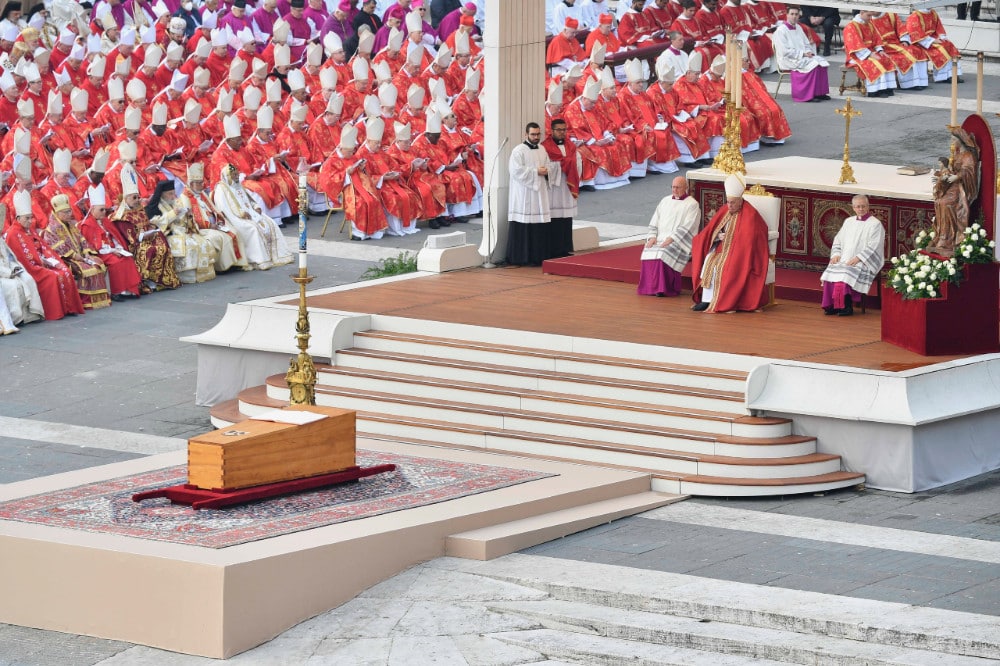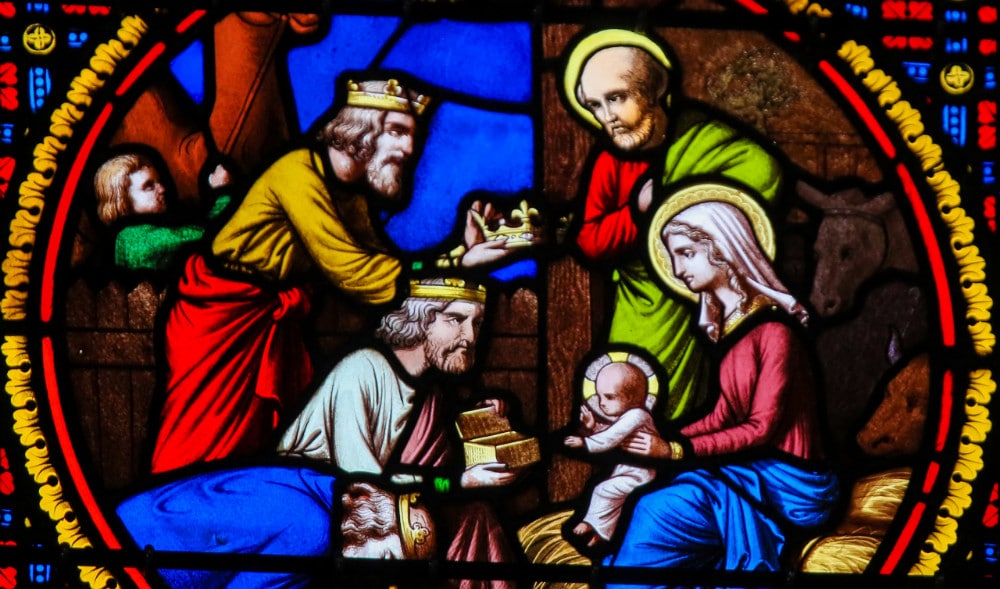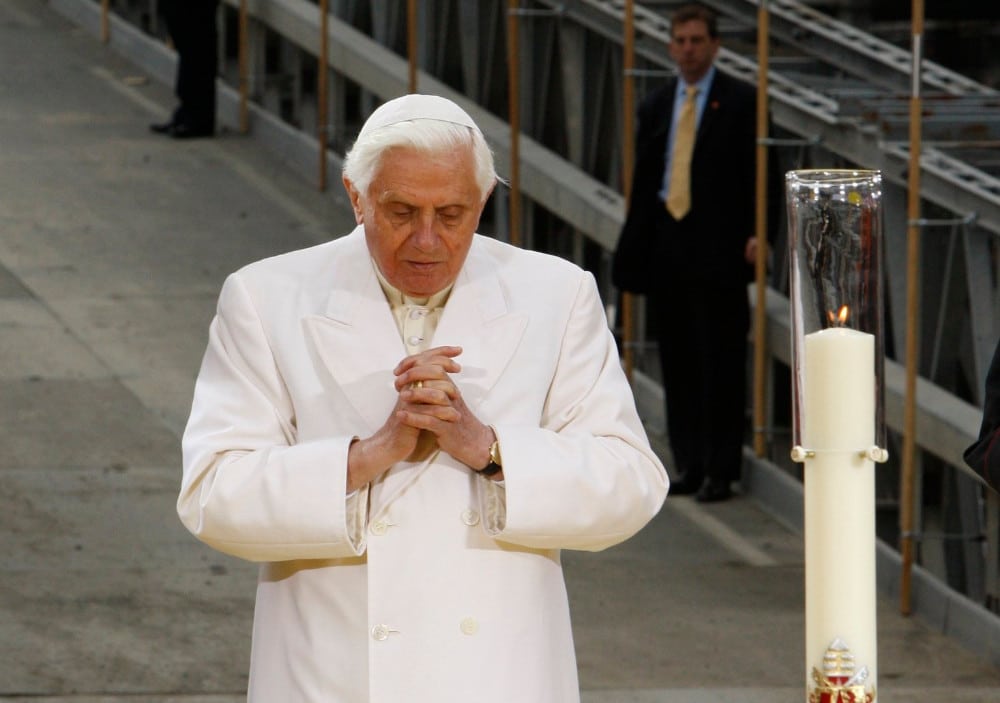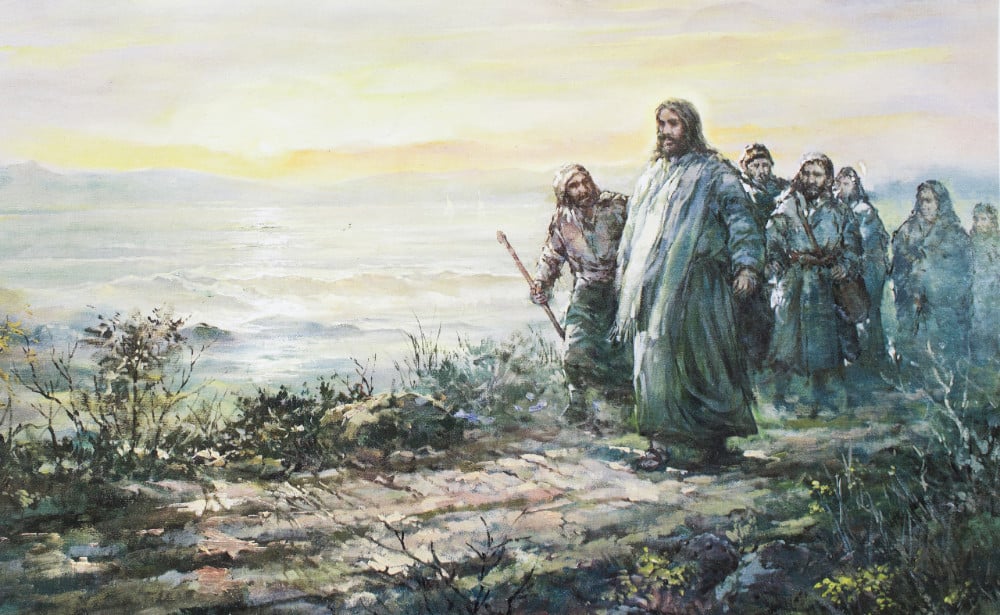The key to understanding the life, work and contribution of Joseph Ratzinger/Pope Benedict XVI (1927-2022) is to be found in a fundamental realization that his entire natural existence was rooted and lived in a supernatural encounter with the person of Jesus Christ in and through the life of the Church.
A poetic baptism
Joseph Aloisius Ratzinger was born to Joseph and Maria on Holy Saturday in 1927, the third child and second son, a brother to Georg and Maria. That same day, he was taken by his family from his home in Marktl, Bavaria, to the parish church of St. Oswald, where he was baptized in the new baptismal water, blessed that very morning during the Easter Vigil. In that simple rite began a life marked not only by his prominence as a priest and scholar, and later as a bishop and pope, but, in the first place, as a son of the Paschal mystery born again in the waters of regeneration that flowed from the very side of Christ to become the wellspring of the Church’s sacraments.
This eminently liturgical beginning to Joseph Ratzinger’s life set the tone for his entire childhood. In 1934, at just 7 years old, he wrote a Christmas letter to the Infant Jesus asking for a German-Latin hand missal, a green chasuble (with which to “play” Mass at home), and an image of the Sacred Heart. In the introduction he penned to his complete works, published only a few years ago, he confessed that “The liturgy of the Church has been for me since my childhood the central reality of my life, and it became the center of my theological efforts.”
Personal and ecclesial
This experience of the liturgy — at one and the same time personal and ecclesial — shaped and guided his thought in every area. During his pontificate, his detractors would sometimes be heard to suggest that his voluminous musings on the liturgy, and indeed on almost every aspect of theology and Church life from a liturgical perspective, were misplaced because he was not a trained liturgist. Yet, for Pope Benedict XVI, to be a Christian was precisely to be one who was essentially and inseparably a liturgical being, caught up in every moment in the life of the Triune God by one’s personal participation in the common life of the Church of Jesus Christ. If every grace and aspect of Christian theology and life emerges from and is credited to the events of the Paschal mystery, how could anything less be so?
For Benedict XVI, then, the liturgy was a truly Christian endeavor oriented toward and emanating from an authentic life in Christ. This life is lived, as his rather poetic baptism demonstrated, through the continuation of the Paschal mystery in the sacraments and in the life of the Church. Thus for Pope Benedict, the Christian vocation was one that demanded communion with the Church of Christ: through her sacraments, by adherence to her teaching, and under the authority of Christ exercised in his name by her authentic pastors.
Vatican II and liturgical reform
This liturgical-ecclesiological conviction shaped not only his theological writings but also his very practical approach to questions relating to Christian unity. For Benedict XVI, the internal Church divisions around the liturgy following the Second Vatican Council were not to be resolved by further divisions — artificially setting the old against the new, the “unreformed” against the “reformed,” and so on — but by emphasizing the common attributes in each such that their exposure one to the other might bring about “an interior reconciliation in the heart of the Church.” Here, as pope, he brought his theological vision of the liturgy as an action of Christ — and thereby fundamentally unifying, and emphatically not divisive — and applied it with confidence as a healing balm to the wounds of division in the trust that, as in all things, it would lead to an authentic renewal born not of human weaknesses but of the action of Christ the Eternal High Priest, the principal protagonist of every authentic act of the Church’s worship.
Unity and the Anglican communion
This same sense of the vitality of ecclesial communion and its liturgical expression also led him to approach the question of Anglican reunion in a new way, navigating past the intransigencies and obstacles erected by new instances of ecumenical stalemate, and the rolling back of agreed positions on issues of faith and order. Rather than become entrenched in circular arguments about whether the Catholic Church would or would not eventually reconcile itself to the idea of the validity of Anglican orders, or the ordination of women, he took as his guiding light the unchanging and unchangeable truth of the Gospel expressed in the Church’s magisterium and followed that light with urgency to its logical conclusion. In doing so, he asserted that in the realm of ecumenism, “expressions of good feelings are not enough” and that “concrete gestures are required” to move the conversation forward, not simply to improve relations between separated Christians but to actually achieve the very communion and peace that is essential in the Christian life of discipleship and grace. Not just to be Christians to each other, but with each other.
In 2009, this radical, even prophetic vision took effect in his apostolic constitution Anglicanorum Coetibus. Here for the first time, he led the Catholic Church to reconcile groups of Christians separated from her by the events of the 16th century and to receive them into the full communion of the Church, whilst also preserving those things that had led them as supplicants to her gates. The establishment of three personal ordinariates — in Britain, in North America and in Australia — has led to thousands of former Anglican clergy and faithful being received into the full communion and peace of the Catholic Church, hundreds of new priests, and, importantly, also the reception of elements of the Anglican tradition that have engendered a life of fidelity to the Gospel and “prompted aspirations toward ecclesial unity.” It is no surprise that a man whose entire ecclesial life was colored by his experience of the liturgy should see in the sincere devotion of many Anglicans what the Second Vatican Council described as “significant elements and endowments which together go to build up and give life to the Church.”
Pope Benedict XVI will be remembered with profound and lasting gratitude by all of us who have benefitted from his insights, convictions and generosity in the ecumenical sphere. Those remembrances will continue until our own lives come to their end. But more than that, Pope Benedict established a lasting way of approaching the centuries-old difficulties that divisions in the Church of Christ have wrought. He has left us a path forward to resolving disagreements, from those seemingly insignificant to those that have divided large swathes of humanity and led to unspeakable damage and hurt. That way for him, amidst all the richness and beauty and profundity of his teaching and life, was always the same: the fullness of life and truth found in and lived through the person of Jesus Christ, who for him — and so also for us — “gives life a new horizon and a decisive direction.”
May this great son of the Church now enjoy the fullness of that life to which, by his words and deeds, he invited and welcomed countless others.
Father James Bradley is an assistant professor in the School of Canon Law at The Catholic University of America.

